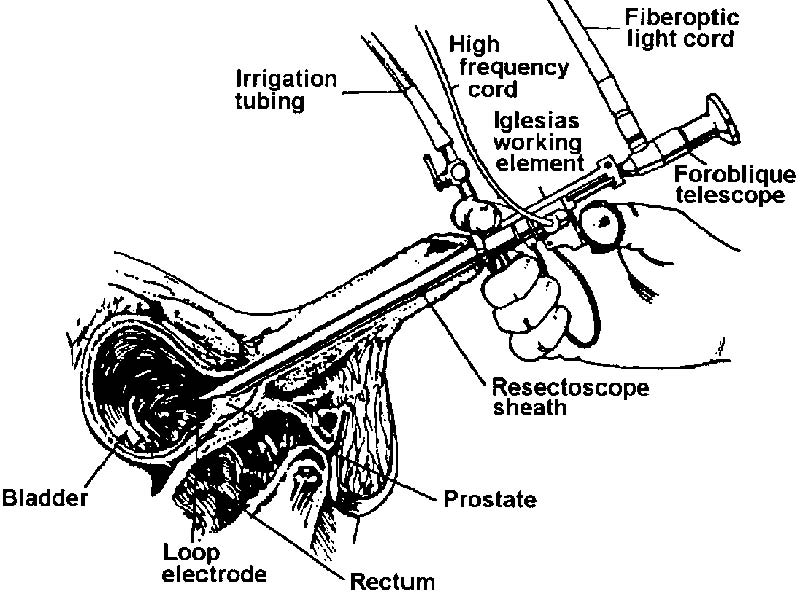Special Surgical Procedures II
LESSON 3: Procedures in Genitourinary Surgery
Section v: operations on the scrotum, penis, and urethra
3-44
3-44. TRANSURETHRAL SURGERY
a. General. By means of a resectoscope passed into the bladder via the urethra, piecemeal resection of the prostate gland and of tumors of the bladder and bladder neck may be carried out, and bleeding vessels and tumors may be fulgurated.
b. Operative Procedure. See Figure 3-12.
(1) The resectoscope is assembled. The sheath is fitted with its obturator. The electrode and telescope are attached to the working element. The irrigating system is connected to the sheath. The lamp cord or fiberoptic bundle is fitted to the telescope. The electrode is attached to the electrosurgical unit. The currents are adjusted as the surgeon directs.
(2) The surgeon lubricates the sheath containing the obturator and inserts it into the urethra and bladder. The obturator is removed, and the operating element is introduced through the sheath.
(3) Viewing the anatomy through the telescope, the surgeon begins the electro-dissection, alternately cutting and coagulating. The bladder is permitted to drain--washing out blood tissue and clots--and refill at intervals. The operating element may be removed and evacuating devices such as the Ellik applied, to flush out the bladder.
(4) When the stones are present, they are trapped or crushed with dislodgers or lithotrites, and copious irrigations are done.
Figure 3-12. Transurethral resection of bladder tumor.
(5) When resection of the lesion is completed and bleeding controlled, the operating instrument is removed. A Foley catheter is introduced. A catheter stylet may be employed. The bag of the catheter is filled, using a 30-ml syringe and adapter. The catheter may be a self-inflating type or have a valve that requires no clamp to retain the fluid in the hemostatic bag. The catheter is flushed for patency, irrigating with an Asepto syringe. When the surgeon is satisfied that the patient's condition is good, the patient is transferred from the operating table.


